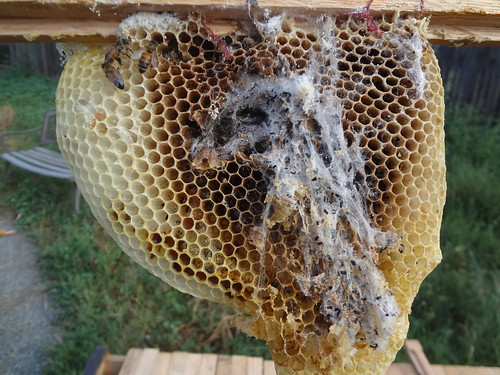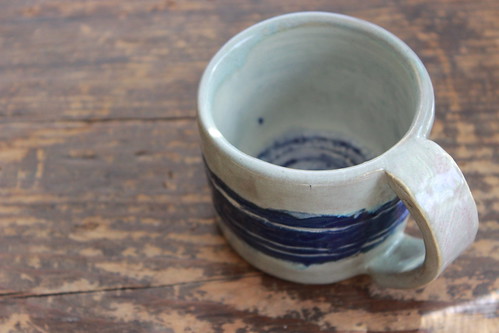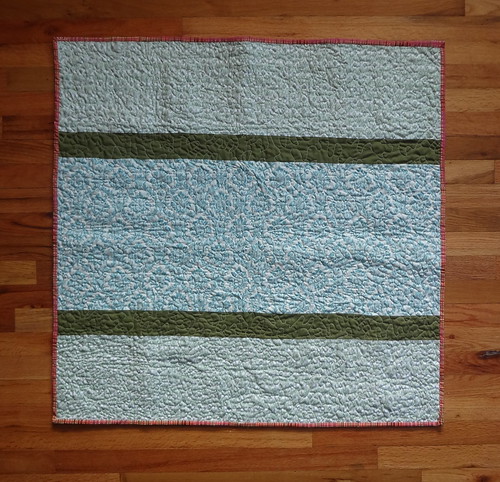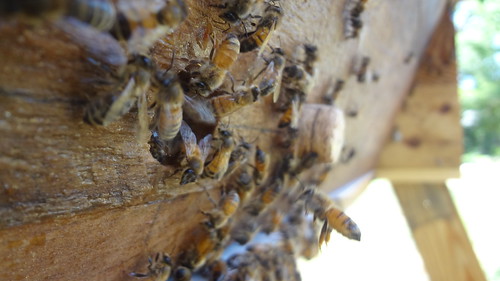
Well, our honeybee colony's population has continued to decline (though I've continued feeding them) and yesterday I looked in the observation window and discovered that wax moth larvae had destroyed about half of the comb. The adult moth lays eggs in the comb and when the larvae hatch, they plow through the comb, eating everything in their path: beeswax, honey, stored pollen, brood, and
even wood.
This is a sign the colony is too weak to defend itself–a strong hive would not let this happen. Perhaps if I had done an inspection of the combs more recently (pulling each one out to look at it), I would have discovered the moth larvae sooner. Then it may have been contained to one comb, as opposed to three.
There's not much you can do about wax moth larvae. I brushed the bees off the infested comb, squished the larvae (would make good chicken food), and saved some of the more intact comb to try to reuse. I put this comb in the freezer to kill any moth eggs.
It doesn't seem likely that the colony will survive the winter. I've been seeing yellow jackets in the hive as well, another sign that the hive is weak. It's possible that the queen is already dead, since I didn't see any new eggs or (bee) larvae in the hive, just a few capped brood cells. Sad, but I feel we did everything we could to improve their chances of survival. At least we have some built comb we can save for future colonies, and we've gained some experience.
To close, some interesting words on wax moths, from Les Crowder and Heather Harrell, authors of
Top-bar Beekeeping: Organic Practices for Honeybee Health:
Although we may not see them, there are wax moths, either latent or active, in all beehives. Pregnant moths have a scent-cloaking ability and slip into the hives past the guard bees and lay eggs. Tiny threadlike larvae then begin chewing their way through the combs, eating cocoon silk, honey, pollen, bee larvae, and beeswax. Wax moth larvae actually are unable to digest combs of clean, pure beeswax and instead thrive on old black combs filled with bee feces and layers of cocoons.
Sometimes we hear of hives succumbing to wax moth, but in many cases this is because all the combs in the hive simply had gotten too old and dirty to house bees, so the bees allowed the wax moths to take over. In a healthy hive, the bees in a colony are constantly weeding out wax moth larvae. If the hive gets sick or queenless and the population of bees diminishes, wriggling masses of wax moth larvae proliferate and destroy the hive. However, if a hive is healthy and strong, the bees can keep them at bay and even use them to remove old, unsafe combs. We consider wax moths to be symbiotic organisms in a beehive, like the wrecking ball that tears down an old condemned building to make space for new construction.
Sure enough, the old combs I had hung from top bars to give the bees a head start were the ones most destroyed by larvae.




















































